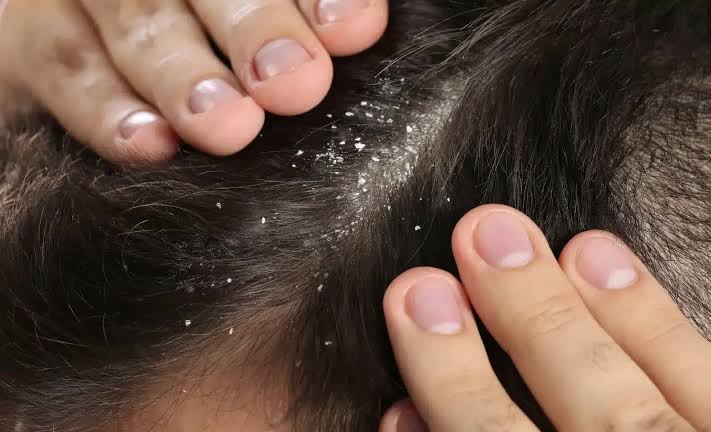Managing Dandruff Without Harsh Chemicals

April 23, 2025
Dandruff is one of the most common scalp concerns, affecting up to 50% of the population at some point in their lives. It can be embarrassing, itchy, and sometimes even painful. While over-the-counter medicated shampoos often rely on strong chemicals like zinc pyrithione, coal tar, or selenium sulfide, there’s a growing interest in gentler, more natural approaches.
In this blog post, we’ll explore the causes of dandruff, and then dive into a range of effective, chemical-free strategies you can use at home.
1. Understanding Dandruff: What’s Really Happening?
Dandruff manifests as white flakes on the scalp and hair, sometimes accompanied by itching and redness. Two main factors contribute:
Excessive Scalp Oil Production
Sebaceous glands produce sebum to keep skin hydrated. When overactive, they can create an oily environment that favours yeast (Malassezia) growth.
Sensitivity to Scalp Microflora
Malassezia is a naturally occurring yeast on everyone’s scalp. In some people, it metabolizes sebum into irritant by-products, triggering cell turnover and flaking.
Other triggers include stress, climate changes, diet deficiencies, and even certain hair products. Understanding your personal triggers is the first step toward chemical-free management.
2. Gentle Daily Habits for a Healthy Scalp
Before turning to remedies, cultivate scalp-friendly routines:
Regular, Warm (Not Hot) Washing
Hot water strips natural oils excessively. Aim for lukewarm washes, 2–3 times per week, adjusting based on oiliness.
Scalp Massage
A 2-minute circular massage boosts circulation, helps loosen flakes, and encourages natural oil distribution. Do this under the shower with or without a drop of oil.
Brushing with a Natural-Bristled Brush
Gently brush before washing to remove loose flakes and distribute oils down the hair shaft.
Silk or Satin Pillowcases
These reduce friction and hair breakage, and help maintain scalp moisture overnight.
3. Powerhouse Ingredients from Your Kitchen
3.1 Apple Cider Vinegar (ACV) Rinse
Why it works: ACV’s mild acidity helps restore scalp pH (ideal ~4.5–5.5), discouraging yeast overgrowth.
How to use: Mix 1 part raw, unfiltered ACV with 2 parts water. After shampooing, pour over scalp, massage for 1 minute, then rinse with cool water. Use once weekly.
3.2 Coconut Oil
Why it works: Rich in lauric acid with antimicrobial properties; deeply nourishes dry scalp.
How to use: Warm 1–2 tablespoons of virgin coconut oil. Massage into scalp, leave on for 30–60 minutes (or overnight under a shower cap), then shampoo out. Repeat 1–2 times weekly.
3.3 Aloe Vera Gel
Why it works: Anti-inflammatory and moisturizing; soothes itchiness and redness.
How to use: Apply pure aloe gel directly to the scalp. Leave for 20–30 minutes, then rinse. Safe for daily use.
3.4 Tea Tree Oil (Melaleuca Oil)
Why it works: Potent antifungal and antiseptic agent.
How to use: Never apply neat—always dilute. Combine 5 drops of tea tree oil with 1 tablespoon of carrier oil (coconut, jojoba, or sweet almond). Massage into scalp, leave 15–20 minutes, then shampoo. Use once weekly.
3.5 Yogurt and Honey Mask
Why it works: Probiotics in yogurt may rebalance scalp microflora; honey is naturally antibacterial and humectant.
How to use: Mix ½ cup plain yogurt with 1 tablespoon raw honey. Apply to damp scalp, leave 20–30 minutes, then rinse and shampoo as usual. Use bi-weekly.
4. Nutrition and Lifestyle Tips
Hydration: Drink at least 8 glasses of water daily to support skin health.
Balanced Diet: Include omega-3 rich foods (salmon, flaxseeds), zinc (pumpkin seeds, legumes), and probiotics (fermented foods).
Stress Management: Practice yoga, meditation, or regular exercise—stress spikes oil production and inflammation.
Sunlight Exposure: Moderate sun exposure helps reduce yeast load; 10–15 minutes daily is sufficient. Always protect hair color and skin afterward.
5. When to Seek Professional Help
If your dandruff is severe—characterized by intense itching, widespread redness, or patchy hair loss—it may be seborrheic dermatitis or psoriasis. In such cases, consult a dermatologist.
6. Bringing It All Together
Managing dandruff naturally is about consistency and listening to your scalp’s needs. Start with gentle daily rituals, experiment with the kitchen remedies above, and support your body from within through nutrition and stress relief. Most importantly, be patient—natural treatments often take a few weeks to show full results.
By integrating these chemical-free strategies into your hair-care routine, you’ll not only manage dandruff effectively but also promote overall scalp health—without the harsh side-effects. Here’s to a confident, healthy hair.
